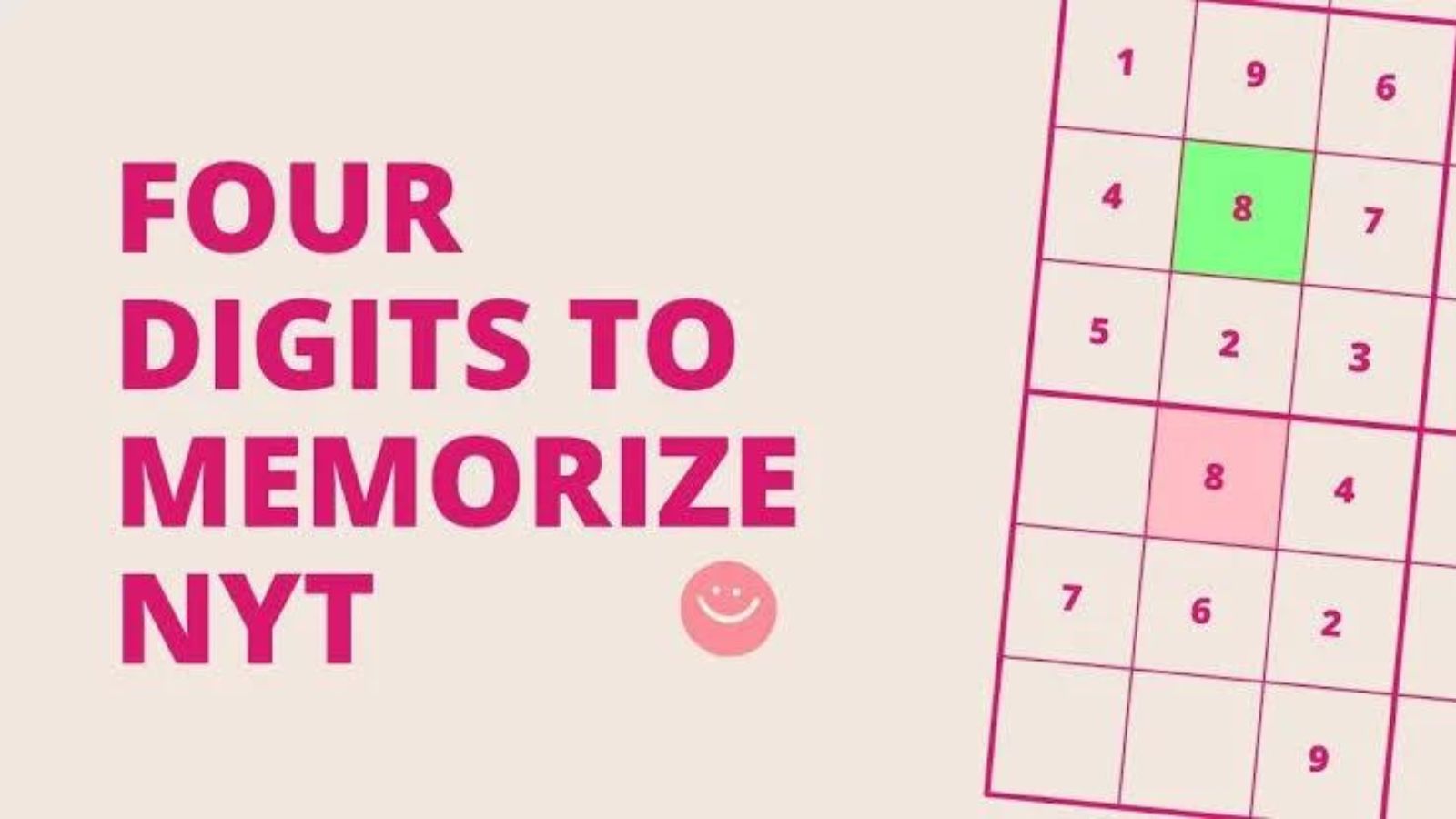Introduction
Memorizing numbers is a skill that can come in handy in various situations, from remembering phone numbers to solving puzzles. In the world of NYT puzzles, specifically, memorizing four-digit numbers is a key aspect. But why exactly four digits, and how can we make this task easier and more efficient? Let’s dive into the fascinating world of number memorization.
History of NYT Puzzles
The New York Times (NYT) has been a pioneer in the puzzle world for decades. Its puzzles have evolved significantly over time, incorporating various elements to challenge and entertain solvers. One intriguing addition has been the use of four-digit codes, which have become a staple in certain types of NYT puzzles. These codes add a layer of complexity and intrigue, pushing solvers to engage their memorization skills.
The Psychology of Memorization
Our brains are wired to recognize and recall numbers, but this ability can vary from person to person. Understanding how our memory works can help us develop strategies to improve it. When we encounter a four-digit number, our brain processes it as a whole rather than individual digits. This is where memorization techniques come into play, aiding our brain in storing and recalling these numbers more effectively.
Why Four Digits?
The use of four digits is no coincidence. Four digits strike a balance between simplicity and complexity. They are long enough to provide a challenge but short enough to be memorized with some effort. This balance makes four-digit numbers ideal for puzzles and other practical applications, such as PINs and security codes.
Techniques for Memorizing Four-Digit Numbers
Chunking Method
One of the most effective ways to memorize four-digit numbers is by chunking. This method involves breaking down the number into smaller, more manageable parts. For example, instead of trying to remember “4792” as a single entity, you can split it into “47” and “92”.
Visualization Techniques
Visualization can also be a powerful tool. By creating a mental image associated with the number, you can make it more memorable. For instance, you might visualize the number “1234” as a sequence of steps or as an arrangement of objects.
The Major System
The Major System is a mnemonic technique that converts numbers into consonant sounds and then into words. For example, the number “34” might be converted into “MR” (where M stands for 3 and R for 4), and then into a word like “Mirror”. This system can make abstract numbers more concrete and easier to remember.
The Dominic System
The Dominic System is similar to the Major System but assigns specific people or characters to numbers. For example, “45” might correspond to a famous athlete whose jersey number is 45. This personal association can make the number more memorable.
Practical Applications
These memorization techniques can be directly applied to NYT puzzles, helping you recall necessary four-digit codes with ease. Beyond puzzles, these methods can also be useful in everyday scenarios, such as remembering locker combinations or PIN codes.
Common Pitfalls and How to Avoid Them
Memorization isn’t always straightforward, and there are common pitfalls to watch out for. One mistake is trying to memorize numbers without any strategy. Another is not practicing regularly. To overcome these challenges, it’s crucial to use structured techniques and incorporate consistent practice into your routine.
Tools and Resources
There are various tools and resources available to help improve your memory. Apps like Lumosity and Peak offer exercises designed to boost cognitive functions, including memory. Books such as “Moonwalking with Einstein” by Joshua Foer provide insights and strategies for memory improvement. Online courses can also offer structured learning paths to enhance your memorization skills.
Real-Life Examples
Numerous individuals have successfully improved their memory using these techniques. For example, competitive memory athletes often use systems like the Major and Dominic Systems to achieve impressive feats, such as memorizing long sequences of numbers or decks of cards. NYT puzzle enthusiasts have also reported better performance and faster solving times after adopting these methods.
The Future of Memorization in Puzzles
As puzzles continue to evolve, the role of memorization may also change. Emerging trends in cognitive training suggest that future puzzles might incorporate more complex memorization tasks, pushing solvers to develop even more advanced techniques.
Conclusion
Memorizing four-digit numbers, whether for NYT puzzles or other purposes, is a valuable skill that can be developed with practice and the right techniques. By understanding the psychology of memorization and applying methods like chunking, visualization, and mnemonic systems, you can enhance your ability to recall numbers efficiently. As you continue to practice, you’ll find that these techniques become second nature, making memorization an easy and enjoyable task.
FAQs
How long does it take to memorize four digits?
It varies from person to person, but with consistent practice, you can typically memorize a four-digit number in a few minutes.
Are there any shortcuts to improve memory quickly?
While there are no true shortcuts, using mnemonic techniques like the Major and Dominic Systems can significantly speed up the memorization process.
How often should I practice memorization techniques?
Regular practice is key. Aim for daily or at least several times a week to see the best results.
Can these techniques be applied to other types of puzzles?
Absolutely! These techniques are versatile and can be used for various puzzles and memory tasks beyond NYT puzzles.
What is the best method for someone just starting?
If you’re new to memorization techniques, start with chunking and visualization. These methods are simple yet effective and provide a solid foundation for more advanced techniques.

Leave a Reply